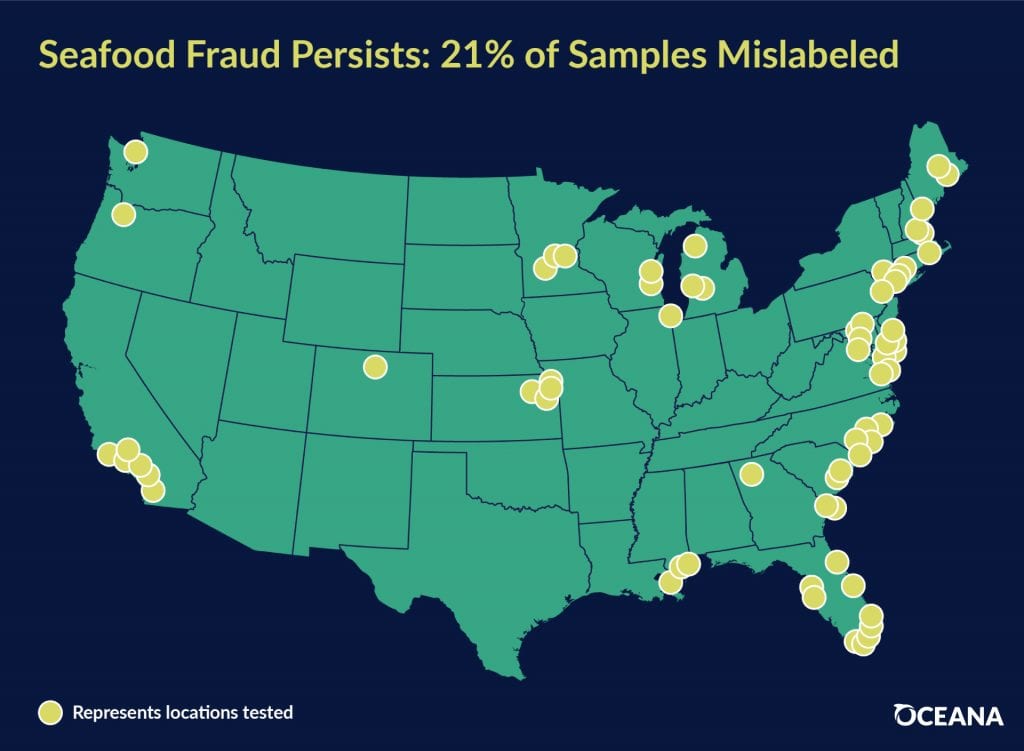Report | March, 2019
Casting a Wider Net: More Action Needed to Stop Seafood Fraud in the United States
The federal government’s Seafood Import Monitoring Program currently only applies to 13 types of imported fish and only traces that product from the boat to the U.S. border. Between March and August 2018, Oceana tested popular seafood types not covered by this program and found that 1 in every 5 fish tested was mislabeled.
A few of the report highlights include:
- One in every 5 of the 449 fish tested (21 percent) were mislabeled.
- One out of every 3 establishments visited sold mislabeled seafood.
- Seafood was more frequently mislabeled at restaurants (26 percent) and smaller markets (24 percent) than at larger chain grocery stores (12 percent).
- Of the species tested, sea bass and snapper had the highest rates of mislabeling (55 and 42 percent, respectively).
Seafood substitutes identified in this study include:
- Imported seafood sold as regional favorites, fooling consumers into thinking their seafood is locally sourced.
- Vulnerable species sold as more sustainable catch.
- Seafood sold with generic names like “sea bass” disguising lower-value species or masking health and conservation risks.
Seafood fraud ultimately deceives consumers who fall victim to a bait and switch, disguises conservation and health risks, and hurts honest fishermen and seafood businesses. Seafood traceability—from boat to plate—is critical to ensure that all seafood sold in the U.S. is safe, legally caught and honestly labeled.
Media Contacts
Megan Jordan, 202.868.4061, 703.401.3004, mjordan@oceana.org
Dustin Cranor, 202.341.2267, 954.348.1314, dcranor@oceana.org
Bios
- Deputy Vice President, U.S. Campaigns Beth Lowell
- Report Author and Senior Scientist Dr. Kimberly Warner
B-roll and photos available upon request. Contact Megan Jordan.




